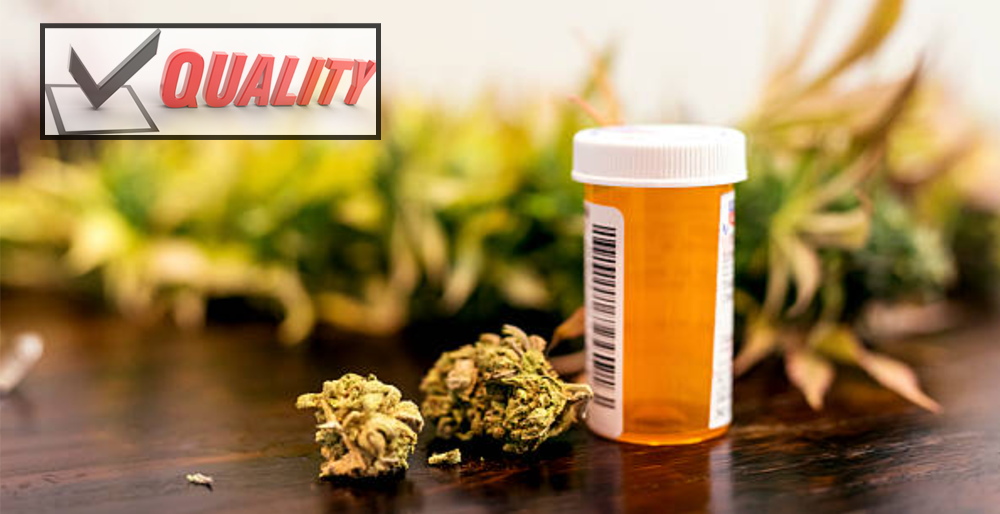 Over the past few years, we have seen a growing influx of request for container testing of package systems that are designed and intended to hold cannabis-based products. While there is no defined universal and national specification on testing requirements for these types of package systems, some states, such as New Jersey, have clearly defined guidelines on the specific types of tests to be conducted to ensure your cannabis container meets the state regulatory guidelines. The intent of this article is to review key components (highlighted sections) of the New Jersey guidelines and offer insights in to how best to meet these requirements.
Over the past few years, we have seen a growing influx of request for container testing of package systems that are designed and intended to hold cannabis-based products. While there is no defined universal and national specification on testing requirements for these types of package systems, some states, such as New Jersey, have clearly defined guidelines on the specific types of tests to be conducted to ensure your cannabis container meets the state regulatory guidelines. The intent of this article is to review key components (highlighted sections) of the New Jersey guidelines and offer insights in to how best to meet these requirements.
17:30-13.2 CANNABIS ITEM PACKAGING REQUIREMENTS
(a) A cannabis cultivator or cannabis manufacturer, as applicable, shall package cannabis items in packaging compliant with the requirements of this subchapter in a secure area connected to the cultivation or manufacturing area in accordance with this section before transfer to another cannabis business. 1. The usable cannabis and cannabis products shall be handled on food grade stainless steel tables. 2. Proper sanitation shall be maintained. 3. Proper rodent and bird exclusion practices shall be employed at all times.
(b) Each package of usable cannabis and cannabis product shall be sealed in a closed container, so that the package cannot be opened, and the contents consumed, without the seal being broken.
NOTE: “without the seal being broken” indicates that the container being used is expected to have an induction seal as part of the closure system.
-
- Such container for the packaging of cannabis products shall meet United States Pharmacopeia standards (see Containers under Preservation, Packaging, Storage, and Labeling in the General Notices and Requirements, Containers 661, and Containers—Permeation 671);
NOTE: USP 661 and USP 671 are a series of tests outlined by the United States Pharmacopeia. USP 661 testing is specific to plastic package systems. USP 671 testing is specific to moisture ingress testing and container light resistance testing.
-
- Such container for the packaging of cannabis products shall depend on the physical and chemical properties of the cannabis product; Container–cannabis interaction is to be considered with substances such as phenolic compounds and sorptive materials (e.g., polypeptides and proteins);
(c) Each package of usable cannabis and cannabis product shall bear a label that complies with N.J.A.C. 17:30-13.3 and shall be affixed with the universal symbol established by the Commission pursuant to N.J.A.C. 17:30-13.6.
(d) A cannabis cultivator shall only package usable cannabis, and such packages may contain no more than ¼ oz or 7.09 grams.
(e) A cannabis manufacturer shall only package authorized forms of cannabis products, and such packages may contain such amounts in accordance with N.J.A.C. 17:30-11.5.
(f) All packaging for cannabis items shall:
-
- Be fully enclosed, opaque, of a single color, and light resistant; Packaging may contain a logo or symbol of a different color or colors, provided the logo is no larger than 1 inch in length and 1 inch in height.
NOTE: This indicates that the container must be opaque and light resistant as tested via the USP 671 container light resistance test method
-
- Be child-resistant in accordance with the Poison Prevention Packaging Act of 1970, 16 C.F.R. Part 1700;
NOTE: Child resistance testing for containers systems used to package medicinal products is an expected requirement. There are organization and specific test labs that have comprehensive child resistant test programs in place that utilize networks of pre-schools and nursing homes to do live action testing.
-
- Protect the product from contamination; and
NOTE: This indicates that the container must provide verification that it can be sealed in a manner that prevents intrusion of any type of contaminant
-
- Be able to be resealed in a child-resistant manner unless the package contains a single serving cannabis item. For ingestible products in liquid form with multiple serving units, the container must have a resealing cap or closure.
(g) Once a package is sealed, a cannabis business shall not open the package except for quality control purposes. Once the seal is broken on a cannabis item ready for sale to the consumer, the cannabis item is deemed unusable.
(h) Cannabis businesses shall make a good faith effort to utilize packaging that is biodegradable.
While the testing requirements vary widely on a state-to-state basis, the New Jersey requirements, which make strong reference to the USP testing methods, offer a comprehensive example of methods that are routinely used and accepted when it comes to drug and medical device products. As such, implementing a test program based upon these methods will ensure that the container and package system you are using for your cannabis-based products will help to meet all of the current and ever-changing requirements when it comes to container system qualification.
As the only FDA regulated and inspected cGMP laboratory solely dedicated to container and package testing for medical products, the CS Analytical Team are experts when it comes to USP testing for a wide variety of container and package systems. We can help you define the most optimal approach and technique to ensure you meet all regulatory requirements when it comes to selecting and qualifying a container and package system for your cannabis product.

